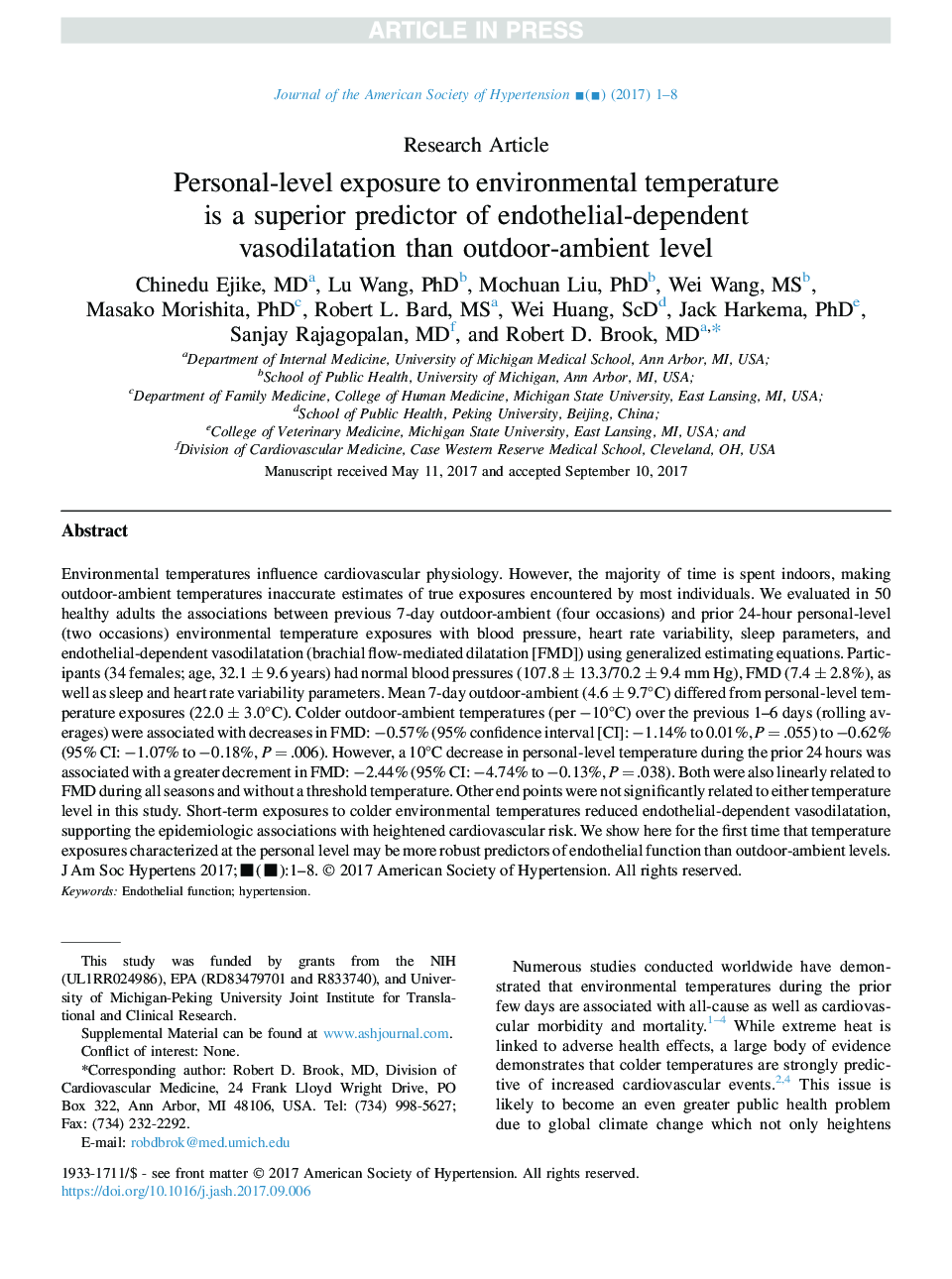| کد مقاله | کد نشریه | سال انتشار | مقاله انگلیسی | نسخه تمام متن |
|---|---|---|---|---|
| 8667537 | 1578006 | 2017 | 9 صفحه PDF | دانلود رایگان |
عنوان انگلیسی مقاله ISI
Personal-level exposure to environmental temperature is a superior predictor of endothelial-dependent vasodilatation than outdoor-ambient level
ترجمه فارسی عنوان
قرار گرفتن در معرض دمای شخصی در سطح فردی یک پیشگویی کننده برتر از وازودیلاتاسیون وابسته به اندوتلیال نسبت به سطح هوای محیط است
دانلود مقاله + سفارش ترجمه
دانلود مقاله ISI انگلیسی
رایگان برای ایرانیان
کلمات کلیدی
عملکرد اندوتلیال، فشار خون،
موضوعات مرتبط
علوم زیستی و بیوفناوری
علم عصب شناسی
سیستم های درون ریز و اتونومیک
چکیده انگلیسی
Environmental temperatures influence cardiovascular physiology. However, the majority of time is spent indoors, making outdoor-ambient temperatures inaccurate estimates of true exposures encountered by most individuals. We evaluated in 50 healthy adults the associations between previous 7-day outdoor-ambient (four occasions) and prior 24-hour personal-level (two occasions) environmental temperature exposures with blood pressure, heart rate variability, sleep parameters, and endothelial-dependent vasodilatation (brachial flow-mediated dilatation [FMD]) using generalized estimating equations. Participants (34 females; age, 32.1 ± 9.6 years) had normal blood pressures (107.8 ± 13.3/70.2 ± 9.4 mm Hg), FMD (7.4 ± 2.8%), as well as sleep and heart rate variability parameters. Mean 7-day outdoor-ambient (4.6 ± 9.7°C) differed from personal-level temperature exposures (22.0 ± 3.0°C). Colder outdoor-ambient temperatures (per â10°C) over the previous 1-6 days (rolling averages) were associated with decreases in FMD: â0.57% (95% confidence interval [CI]: â1.14% to 0.01%, P = .055) to â0.62% (95% CI: â1.07% to â0.18%, P = .006). However, a 10°C decrease in personal-level temperature during the prior 24 hours was associated with a greater decrement in FMD: â2.44% (95% CI: â4.74% to â0.13%, P = .038). Both were also linearly related to FMD during all seasons and without a threshold temperature. Other end points were not significantly related to either temperature level in this study. Short-term exposures to colder environmental temperatures reduced endothelial-dependent vasodilatation, supporting the epidemiologic associations with heightened cardiovascular risk. We show here for the first time that temperature exposures characterized at the personal level may be more robust predictors of endothelial function than outdoor-ambient levels.
ناشر
Database: Elsevier - ScienceDirect (ساینس دایرکت)
Journal: Journal of the American Society of Hypertension - Volume 11, Issue 11, November 2017, Pages 746-753.e1
Journal: Journal of the American Society of Hypertension - Volume 11, Issue 11, November 2017, Pages 746-753.e1
نویسندگان
Chinedu MD, Lu PhD, Mochuan PhD, Wei MS, Masako PhD, Robert L. MS, Wei ScD, Jack PhD, Sanjay MD, Robert D. MD,
